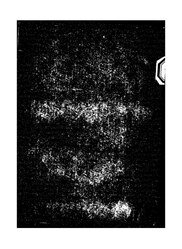File:NLC416-04jh000890-76378 最新刑事政策學.pdf

Original file (1,004 × 1,375 pixels, file size: 10.06 MB, MIME type: application/pdf, 321 pages)
Captions
Captions
Summary[edit]
| 最新刑事政策學
( |
||||||||||||||||||||||||
|---|---|---|---|---|---|---|---|---|---|---|---|---|---|---|---|---|---|---|---|---|---|---|---|---|
| Author |
郭衛著 |
|||||||||||||||||||||||
| Title |
最新刑事政策學 |
|||||||||||||||||||||||
| Publisher |
上海法學編譯社 |
|||||||||||||||||||||||
| Description |
分緒論、刑事學說、刑事學派概論、刑事政策之基本見解、犯罪之發生、犯罪之防壓等8章。著者對「刑事政策學」下的定義是:關於研究人類犯罪行為如何發生、如何防止,以及關於刑事法規的制定和運用的科學。實際上就其所講的內容看,是屬犯罪學範圍。書中介紹犯罪學中的人類學派、社會學派的主要觀點。包括絕對說、極應主義、相對說、預防主義、契約說、道德說等。著者把犯罪的原因歸結為身體、遺傳、習慣、年齡、氣候、地理等諸多因素,抹殺了犯罪的階級性
目錄 |
|||||||||||||||||||||||
| Language | Chinese | |||||||||||||||||||||||
| Publication date | 民國19[1930] | |||||||||||||||||||||||
| Source |
institution QS:P195,Q732353
(民國時期文獻 民國圖書) |
|||||||||||||||||||||||
| 館藏信息 InfoField | D929.4/0717 | |||||||||||||||||||||||
| 主題 InfoField | 預防犯罪 | |||||||||||||||||||||||
| 中圖分類 InfoField | D917 | |||||||||||||||||||||||
| 載體形態 InfoField | 26,278頁 | |||||||||||||||||||||||
Licensing[edit]
This image is in the public domain because it is a mere mechanical scan or photocopy of a public domain original, or – from the available evidence – is so similar to such a scan or photocopy that no copyright protection can be expected to arise. The original itself is in the public domain for the following reason:
This tag is designed for use where there may be a need to assert that any enhancements (eg brightness, contrast, colour-matching, sharpening) are in themselves insufficiently creative to generate a new copyright. It can be used where it is unknown whether any enhancements have been made, as well as when the enhancements are clear but insufficient. For known raw unenhanced scans you can use an appropriate {{PD-old}} tag instead. For usage, see Commons:When to use the PD-scan tag. |
| This image contains digital watermarking or credits in the image itself. The usage of visible watermarks is discouraged. If a non-watermarked version of the image is available, please upload it under the same file name and then remove this template. Ensure that removed information is present in the image description page and replace this template with {{Metadata from image}} or {{Attribution metadata from licensed image}}.
Caution: Before removing a watermark from a copyrighted image, please read the WMF's analysis of the legal ramifications of doing so, as well as Commons' proposed policy regarding watermarks. If the old version is still useful, for example if removing the watermark damages the image significantly, upload the new version under a different title so that both can be used. After uploading the non-watermarked version, replace this template with{{Superseded|new filename|version without watermarks}}.Bahasa Indonesia ∙ italiano ∙ eesti ∙ sicilianu ∙ Deutsch ∙ català ∙ magyar ∙ čeština ∙ română ∙ español ∙ português ∙ English ∙ hrvatski ∙ Plattdüütsch ∙ français ∙ Nederlands ∙ polski ∙ galego ∙ slovenščina ∙ suomi ∙ svenska ∙ Ελληνικά ∙ беларуская (тарашкевіца) ∙ български ∙ македонски ∙ русский ∙ українська ∙ മലയാളം ∙ ไทย ∙ 日本語 ∙ 中文 ∙ 中文(简体) ∙ 中文(繁體) ∙ עברית ∙ العربية ∙ فارسی ∙ +/− |
File history
Click on a date/time to view the file as it appeared at that time.
| Date/Time | Thumbnail | Dimensions | User | Comment | |
|---|---|---|---|---|---|
| current | 09:50, 10 June 2023 |  | 1,004 × 1,375, 321 pages (10.06 MB) | PencakeBot (talk | contribs) | Upload 最新刑事政策學 (1/1) by 郭衛著 (batch task; nlc:data_416,04jh000890,76378; 民國圖書.2; 最新刑事政策學) |
You cannot overwrite this file.
File usage on Commons
The following page uses this file:
Metadata
This file contains additional information such as Exif metadata which may have been added by the digital camera, scanner, or software program used to create or digitize it. If the file has been modified from its original state, some details such as the timestamp may not fully reflect those of the original file. The timestamp is only as accurate as the clock in the camera, and it may be completely wrong.
| Conversion program | Foxit GSDK - Foxit Software Inc. |
|---|---|
| Encrypted | no |
| Page size |
|
| Version of PDF format | 1.7 |






